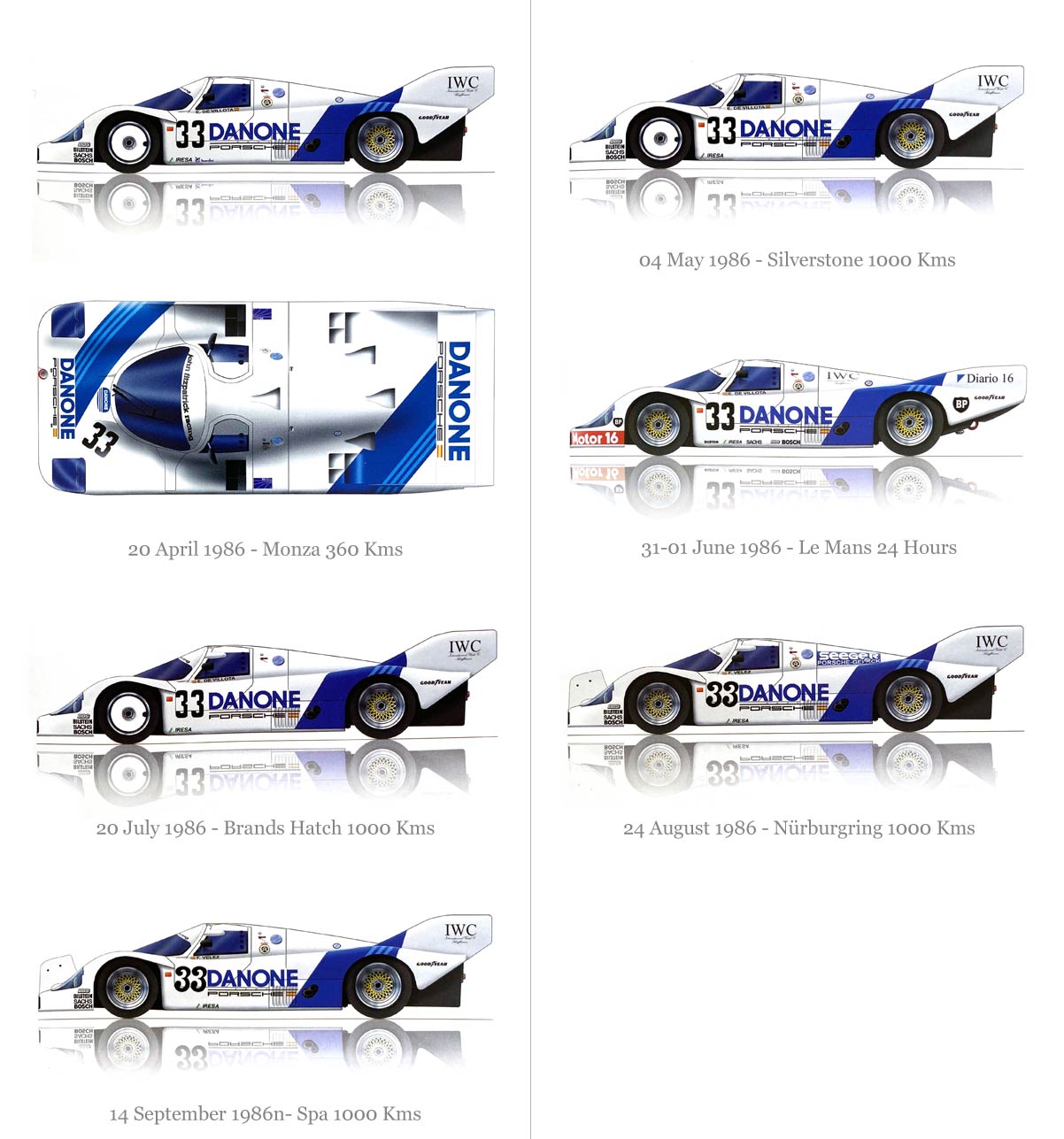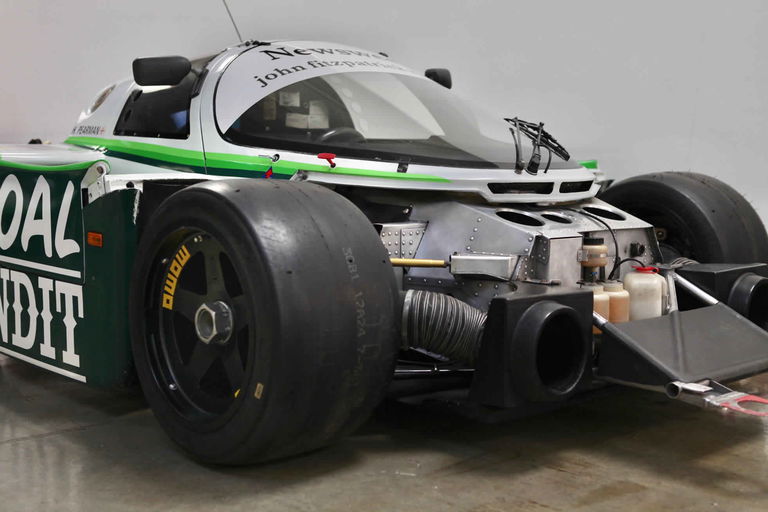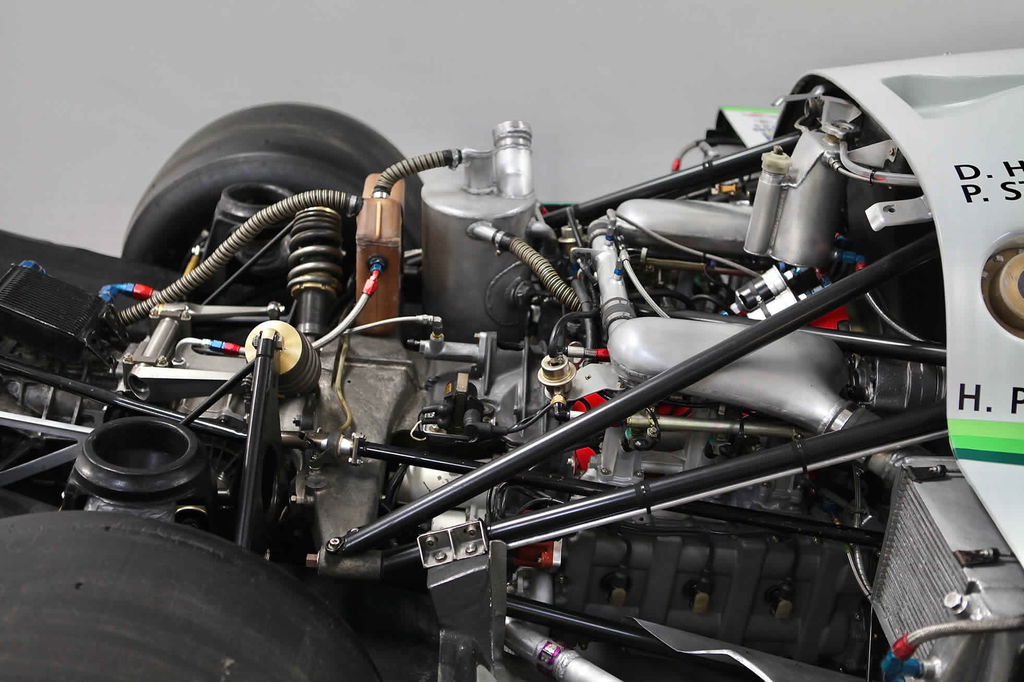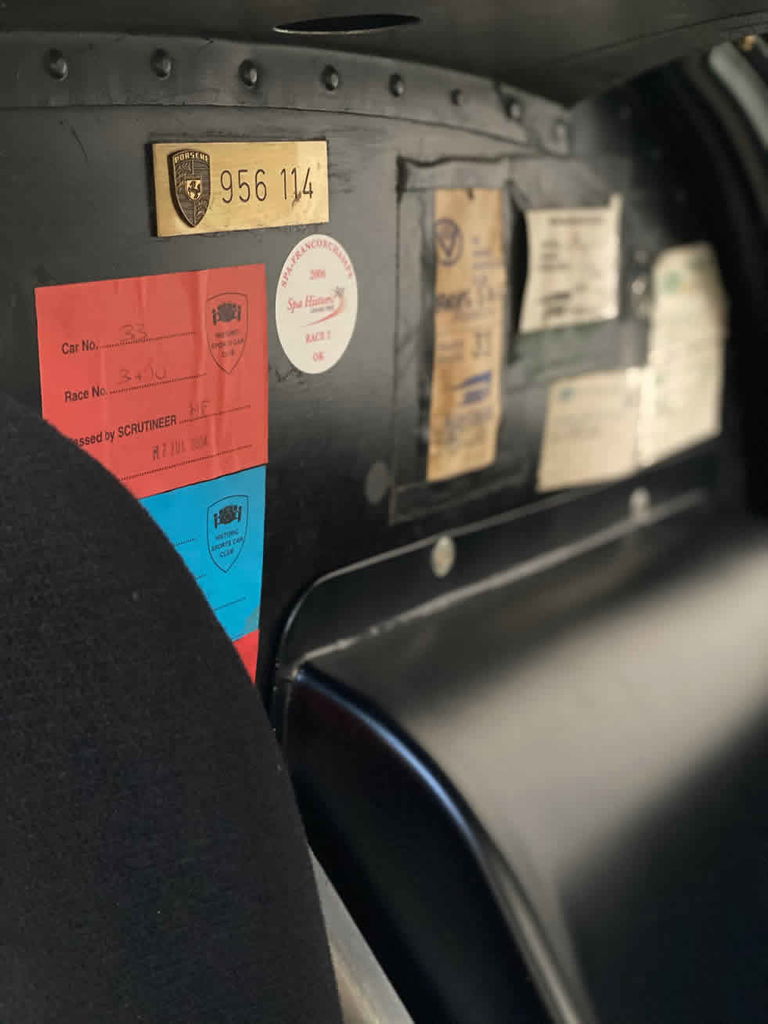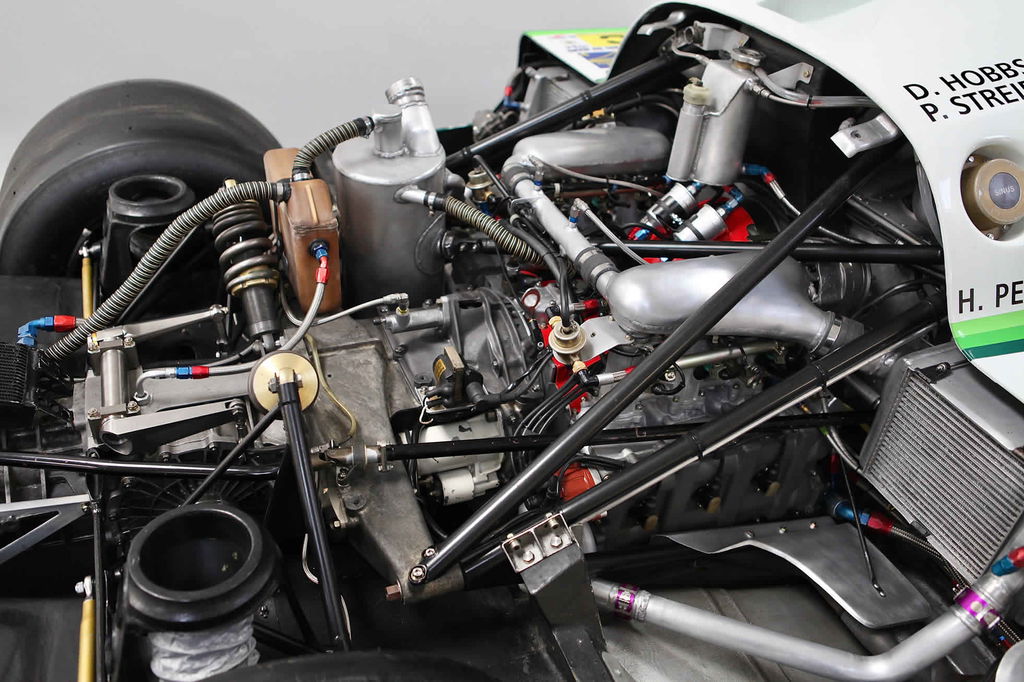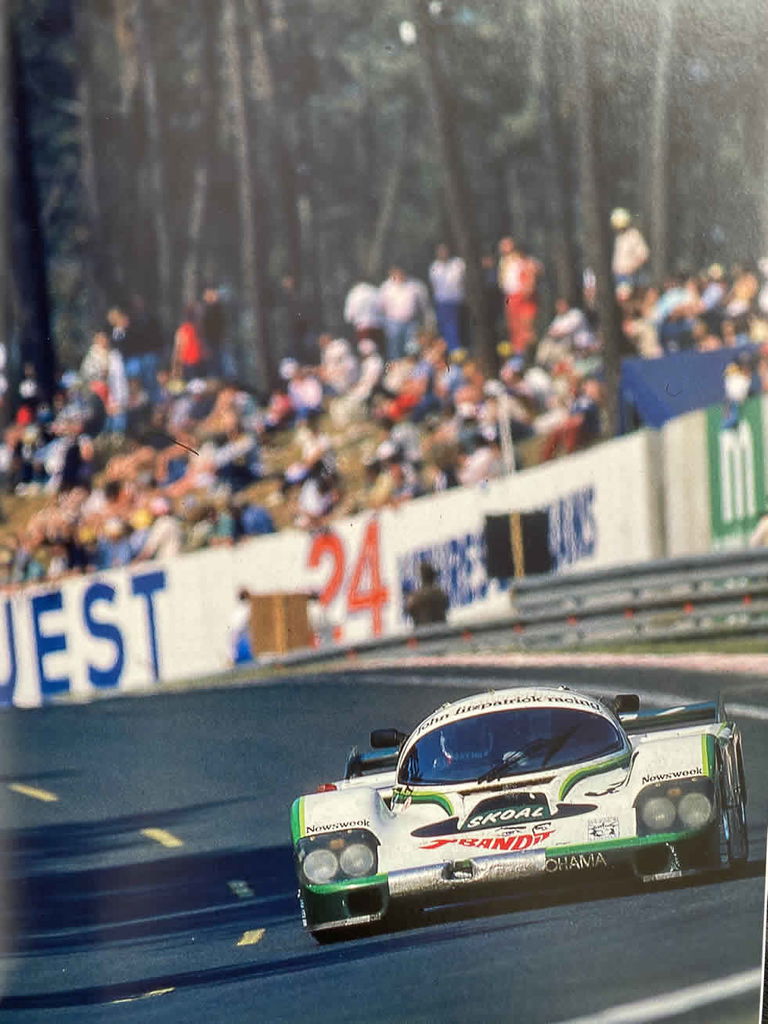The 956B development
Released for the 1984 season, the 956B was the ultimate development of the 956 – built to the 1983 works Rothmans specification, with modified suspension and a one-piece under-body, but now running Bosh Motronic fuel injection. The Motronic fully electronic and integrated ignition and injection system made much closer control of the combustion process possible, providing more power, better fuel consumption and a more progressive throttle response. Combined with Norbert Singer’s further aero development to the underbody, the 956B became the ultimate specification of the 956.
Just four 956Bs were originally built for World Sportscar Championship customer teams – three of these cars survive:
956-114 John Fitzpatrick / SKOAL Bandit (3rd, 4thand 4that Le Mans in 84, 85, 86)
956-115 Kremer Porsche Racing / LIQUI MOLY (Norisring Winner)
956-116 Brun Motorsport / Schiesser – (Destroyed at Spa 1985 / Bellof)
956-117 Joest Porsche / NEWMAN (Double Le Mans Winner 1984 & 1985)
Racing history: 956-114
27 races, 1 win, 2 second places, 3 third places, 4 fourth places, 1 fifth place
John Fitzpatrick Racing took delivery of 956-114 from Porsche on 16th April 1984. A week later the car was debuted at Monza 1000 kms with Hobbs and Boutsen at the wheel. The car then taken to the Silverstone 1000 kms in May during the run up to the 1984 Le Mans 24 Hours.
At Le Sarthe David Hobbs teamed up with Philpe Streif and Sarel van der Merwe, winner of the 1984 Daytona 24 Hours. The team’s main difficulty in practise was an engine problem due to a wrongly installed camshaft. Despite the time lost, Hobbs qualified the car in sixth place. At 4pm 956-114 made a cautious start to the race but by nightfall ‘Hobbo’ was out in front, having taken the lead when the fastest Lancia had a suspension breakage. The lead changed several times between the Bandit and the Joest Newman Porsches. At 6.30am 956-114 developed a misfire, which neither black box nor spark plugs could rectify, eventually the problem was diagnosed to a burnt valve and one cylinder was isolated. For the next 10 hours 956-114 was driven flat out on five cylinders in the intense heat of 1984 and pressed on to a well earned third place, behind the Porsche 956 of Preston Henn, Jean Rondeau and John Paul Jr and the winning Joest Newman Porsche 956B of Henri Pescarlo and Klaus Ludwig.
956-114 again returned to Le Mans in 1985 with John Fitzpatrick Racing but in new livery sponsorship from American100s, finishing 4th overall. The final assault in 1986 saw JFR run the same car in Danone livery, once again finishing 4thoverall.













